Once again, with thanks to our sister publication, Southern Living, new light is shed on a popular U.S. Southern dish. Hoppin’ John originated from the Gullah people and was originally a Lowcountry one-pot dish in South Carolinas before spreading to the entire population of the U.S. South. Some believe that Hoppin’ John may have evolved from rice and bean mixtures that were the subsistence of enslaved West Africans enroute to the Americas. But first, before I post Southern Living’s carefully researched recipe, here’s a look back at the fascinating people we know as the Gullah.
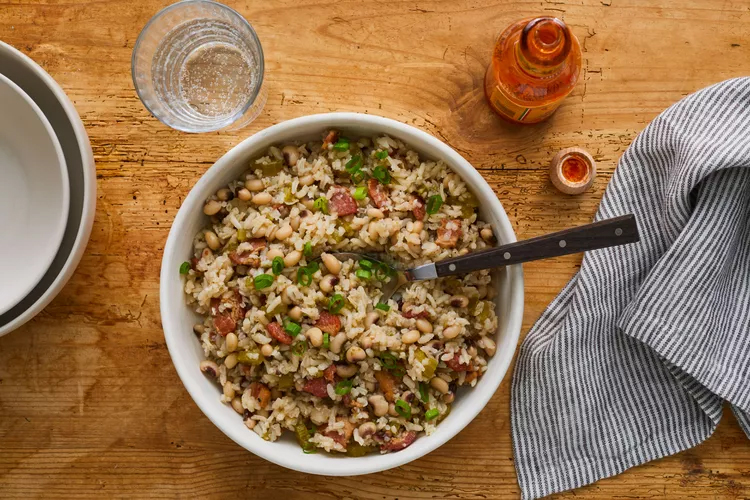
Who are the Gullah?
Slave traders brought Africans from Sierra Leone to the chain of Sea Islands in the U.S. Carolinas for their expertise in planting, harvesting and processing rice. During the 1700s, American colonists in the Southeastern U.S. realized that rice would grow well in the moist, semitropical country bordering their coastline. But the American white plantation slave owners had no experience in the cultivation of rice, so they purchased slaves with a preference for Africans from the “Rice Coast” or “Windward Coast” – the traditional rice-growing region of West Africa. The enslaved people became known as the Gullah (Gul-luh), perhaps derived from Gola, a tribe found near the border of Liberia and Sierra Leone.
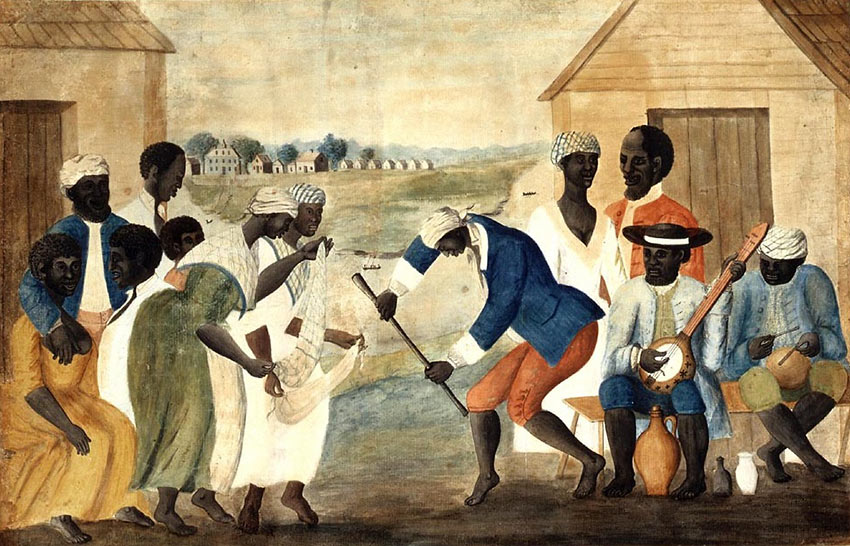
I read that when the U.S. Civil War commenced, white owners hurriedly abandoned their plantations and fled to the mainland, while some Gullah were actually unaware of the war and their eventual freedom from slavery. Due to this isolation, the Gullah were able to preserve more of their African cultural heritage than any other group of Black Americans. They spoke a unique Creole language and maintained a life similar to that of Sierra Leone.
The Birth of Hoppin’ John
Hoppin’ John, also known as Carolina Peas and Rice, is made with cowpeas, mainly black-eyed peas and Sea Island red peas and clay peas, along with rice, chopped onion, sliced bacon and seasoned with salt. Hoppin’ John’s mysterious name is the subject of countless theories. One claims a husband named John came “a-hoppin'” when his wife served the dish. Sadly, there are racist overtones. One story is that a disabled black man nicknamed Hoppin’ John peddled the dish on Charleston streets. A more commonly accepted account suggests Hoppin’ John evolved from the French “poisà pigeon,” or “pigeon peas.” Culinary historian Karen Hess suggests that the name comes from a combination of “kchang,” the Malay word for peas, and “bhat,” a Hindi word meaning “cooked rice.”
Hess calls Hoppin’ John “the signature dish of South Carolina, black and white.” Not just black and white, but rich and poor, free and enslaved, ate Hoppin’ John. As is typical of most early southern cookbooks, initial printed accounts of Hoppin’ John make no mention of its African origin or the debt to which the Carolina rice kitchen owes enslaved Africans. Cookbooks were reserved for the elite and middle classes- in most slave holding states it was illegal to educate enslaved black people in literacy. The designation of “Carolina” dish clouds the history of African innovation and colonial domination that bred Hoppin’ John. Its fate thus diverges from that of Brazil’s Feijoada, freely attributed to enslaved Africans. While the Portuguese glossed over the brutality of slavery in Brazil, Anglo-Americans effectively erased African culinary achievements from the historical record. Each strategy represents a different method of cultural appropriation; the former misrepresents the history of Africans in the Americas, while the latter denies it. These approaches reflect how each nation has, at times, attempted to interpret African presence in its country – Brazil via distortion, and the United States through silence.
Classic Hoppin’ John
By Paige Grandjean, courtesy of Southern Living Test Kitchen
Active Time: 25 mins
Total Time: 1 hr. 30 mins
Servings: 6
A hearty bowl of Hoppin’ John has been the way that many Southern households ring in the New Year. Served alongside a side of collard greens and cornbread, this meal signifies a year filled with good fortune and security.
Making use of thick-cut bacon to impart the perfect amount of smokiness to this soul food staple, our Hoppin’ John recipe is sure to serve up a generous helping of both comfort and tradition for you and your family this New Year’s Day.
:max_bytes(150000):strip_icc():format(webp)/Classic_Hoppin_John_Step7_0202-7d2ad9c300f64f60a59589fd53c952ac.jpg)
What Is Hoppin’ John?
Served on New Year’s Day with a side of collard greens and cornbread, Hoppin’ John is a hearty African-American dish made by slowly simmering black-eyed peas with pork and vegetables. Traditionally served over a bed of freshly cooked rice, this simple yet incredibly flavorful dish of rice, pork, and beans is believed to bring luck and prosperity for the upcoming year.
The signature black-eyed peas used in the recipe are meant to symbolize coins, which is why you’ll find many Southerners eating black-eyed peas as a way of ringing in the New Year.
Classic Hoppin’ John Ingredients
There are three things you do want to keep traditional about your Hoppin’ John recipe: the pork, the peas, and the rice.
- Bacon: While you’ll often find most Hoppin’ John recipes calling for a ham hock, we find that, at times, it can overpower the dish. Instead, we recommend using thick-cut slices of bacon-you’ll end up with crispy pieces of salty goodness without compromising on taste. Not a fan of pork? You can also use smoked turkey for a similar flavor.
- Beans: Dried black-eyed peas are traditionally used in Hoppin’ John, but if you’re pressed for time, you can use either frozen or canned beans.
- Rice: Carolina gold rice is a nuttier, earthier strain of long-grain rice that’s been a staple of the Low country for centuries. If you can’t find Carolina gold rice where you live, feel free to swap it out for any other long-grain white rice.
- Vegetables: The Cajun culinary holy trinity of onions, celery, and bell pepper are key to making this quintessential soul food classic.
- Herbs and seasonings: Fresh thyme, chopped garlic, black pepper, and cayenne are what you’ll need.
- Chicken broth: Using a low-sodium chicken broth helps keep your sodium levels in check. Got some time? Make some homemade chicken stock instead.
The Best Beans for Classic Hoppin’ John
While black-eyed peas are now commonly used in most Hoppin’ John recipes, that has not always been the case. Earlier recipes dating back to the 1800s called for cowpeas, red peas, or field peas.
Also known as red peas or field peas-they belong to the same species, Vigna unguiculata – these beans were commonly grown in the South and known for their chewy, firm texture that did exceptionally well in long, slow-cooked recipes like the Hoppin’ John.
:max_bytes(150000):strip_icc():format(webp)/Classic_Hoppin_John_Step2_0130-d112e416d4e74d34a0a0448ed5ef0832.jpg)
Southern Living Community Tips
Readers have loved this recipe (or their own version) for many years, and they’ve shared some great tips and tricks for making the best pot of Hoppin’ John.
- “I had to use long-grain white rice due to availability but oh my, the trinity shines in this one,” says reviewer Nancy Kunkel.
- “I used canned peas and reduced the broth. Serve with collard greens and cornbread,” says reviewer Kacie Mitchell.
- “Outstanding recipe! I served it over rice instead of cooking the rice in the broth and felt like it balanced the dish very well. Used frozen peas and added some left over ham for additional protein. Will definitely make again!” wrote reviewed Lauren Owens.
Editorial contributions by Christabel Lobo.
Ingredients
- 6 thick-cut bacon slices, chopped
- 4 celery stalks, sliced (about 1 1/2 cups)
- 1 medium-size yellow onion, chopped (about 1 1/2 cups)
- 1 small green bell pepper, finely chopped (about 1 cup)
- 3 garlic cloves, chopped (about 1 Tbsp.)
- 1 tsp. chopped fresh thyme
- 1/2 tsp. black pepper
- 1/4 tsp. cayenne pepper
- 1 1/2 tsp. kosher salt, divided
- 8 cups lower-sodium chicken broth
- 4 cups fresh or frozen black-eyed peas
- 2 Tbsp. olive oil
- 1 1/2 cups uncooked Carolina Gold rice
- Fresh scallions, sliced
:max_bytes(150000):strip_icc():format(webp)/Classic_Hoppin_John_Step1_0129-946e349e81b24f46810e24e1c1c20149.jpg)
Directions
- Cook bacon:
Cook bacon in a Dutch oven over medium-high, stirring occasionally, until starting to crisp, about 10 minutes. - Add vegetables and seasonings:
Add celery, onion, bell pepper, garlic, thyme, black pepper, cayenne, and 1 teaspoon of the salt. Cook, stirring occasionally, until onion is tender, about 8 minutes. - Add broth and peas:
Add broth and black-eyed peas, and bring to a boil over medium-high. Reduce heat to medium-low, and simmer until peas are tender, about 40 minutes. - Drain pea mixture:
Drain pea mixture, reserving cooking liquid. Return pea mixture and 1 cup of the cooking liquid to Dutch oven. Cover to keep warm; set aside. - Cook rice:
Heat oil in a medium saucepan over medium-high. Add rice and cook, stirring often, until fragrant and lightly toasted, 3 to 4 minutes. Stir in 3 cups of the reserved cooking liquid and remaining 1/2 teaspoon salt. Bring to a boil, and reduce heat to medium-low; cover - Combine rice and pea mixture:
Gently stir into pea mixture in Dutch oven. Stir in remaining cooking liquid, 1/4 cup at a time, until desired consistency is reached. Sprinkle servings with sliced fresh scallions.
:max_bytes(150000):strip_icc():format(webp)/Classic_Hoppin_John_Step6_0201-71f1212137cd4628b8e259ad17e3fe01.jpg)
With special thanks to Paige Grandjean and Southern Living Test Kitchen for taking us down the culinary highway, allowing us to explore Hoppin’ John, one of the most iconic dishes in the Americas.



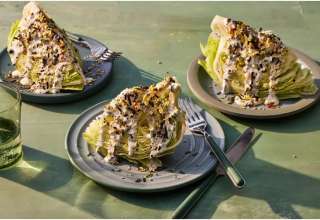

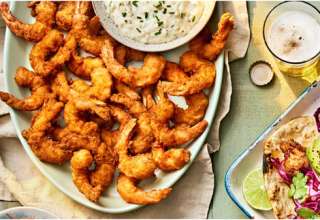
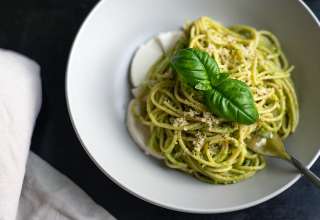

















Bob Henderson
September 3, 2024 at 4:01 pm
Sorry to disagree with Black Eye peas used in Hopin Johns. I spent four hours on a Gullah/Geechee tour last wee in Hilton Head, SC. There was a 4th and a 5th generation Gullah’s narrating the tour. They adamantly said it is field peas and not Black Eye Peas. Field peas were cheap and easy to grown in the low country. I have seen several recipes saying Black Eye’s especially for New Years. They said “if you are not using field peas then it ain’t Hopin John’s.”